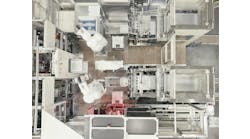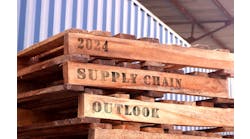Since our customers frequently use several different models of our machines in their packaging lines, we recognized the benefit of adopting a standard that we could apply to all our machines. After a year of research, we decided in 2007 to incorporate Packaging Machinery Language (PackML), a software methodology that creates data standardization across machines. The program fit our lean manufacturing mindset.
SEE ALSO: Standardization Key to Lean Packaging
We worked with our longtime partner Rockwell Automation to begin to transition the controllers over to the CompactLogix platform. Fortunately for us, Rockwell was in the process of incorporating the PackML standard into its Power Programming template. The combination of the modular programming and the PackML standardization made the Power Programming template the perfect starting point for our standardization.
Though PackML has been around for about a decade, Pearson Packaging Systems was one of the first companies in the secondary packaging industry to adopt this programming as a standard. We believed that by implementing this technology, we could make programming and operating our machines more efficient.
The benefits were immediate. Now our controls group and our service and support group can always count on a common structure to the program regardless of machine model. This made program development by the controls group faster, and made troubleshooting for both the controls group and the service team easier and quicker. As a result, we have reduced the overall machine build cycle, as well as the amount of time spent in the field during line startup and commissioning, which creates quicker delivery times to our clients.
PackML also has the potential to improve the efficiency of our customers' internal operations, allowing them to experience quicker turnaround in their packaging cycles — especially those customers that purchase multiple machines or complete end-of-line packaging solutions from us.
Whether they are monitoring the program on a case erector, case sealer or bag inserter, the program and tag structure is common across the machines. That means the vital information they need about how their machines are functioning is reported in this standardized format. Once employees are familiar with the structure of the program, they can go to any piece of our equipment on the line and quickly find the information they need. This is also true when incorporating our equipment into the customer's SCADA system.
The only downside we experienced implementing the modular programming and PackML standard was the size of the program. Because the template is designed to cover a broad range and functionality of machines, the size of the program is much larger than is necessary for some of the smaller, less complex machines. On a couple of our machines, the program size consumed more memory than we would typically desire.
We found a solution. We worked with Rockwell to create a smaller version of the Power Programming template that still would provide the same modular programming and PackML benefit but in a smaller package designed for less-complex systems. This template, Power Programming 4.2 Basic, was completed earlier this year, and we have since converted all of our PackML-compliant machines to the new template. Not only did that keep all our machines standardized, but it had the added benefit of reducing the overall program size by about 30%.
In our industry, it's important to monitor our processes for efficiency and effectiveness — to find ways to minimize waste and increase the value we provide our customers. Taking the time to implement a new process or program that can make our company more efficient — and our customers' more efficient — is always worth the amount of research, time, and effort to put better practices into place.




